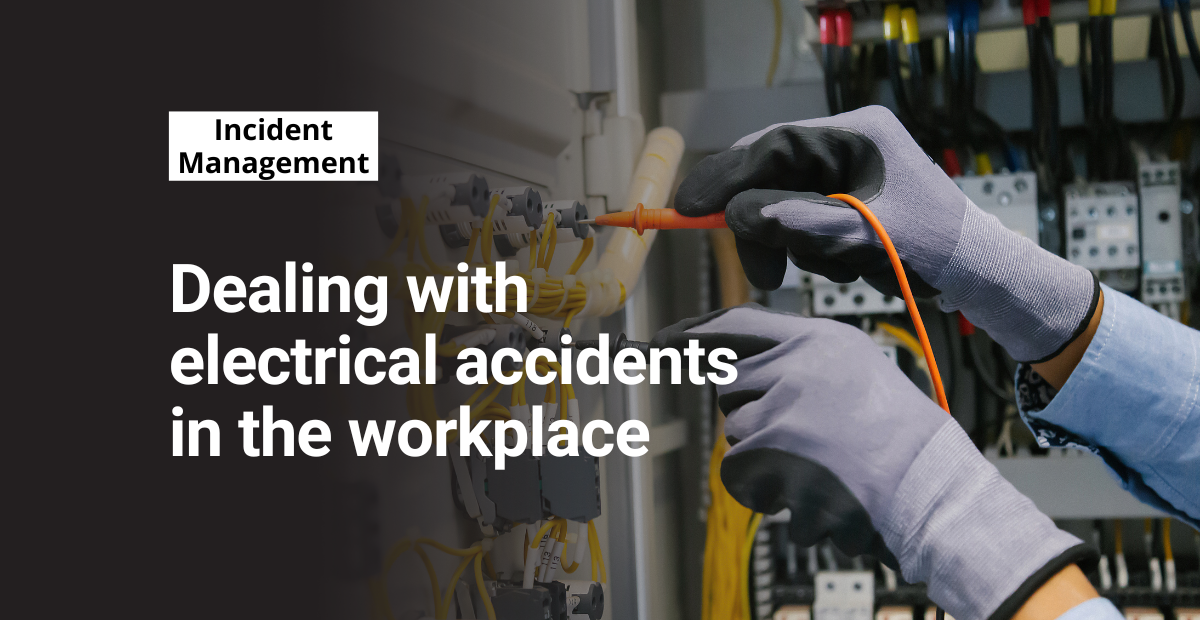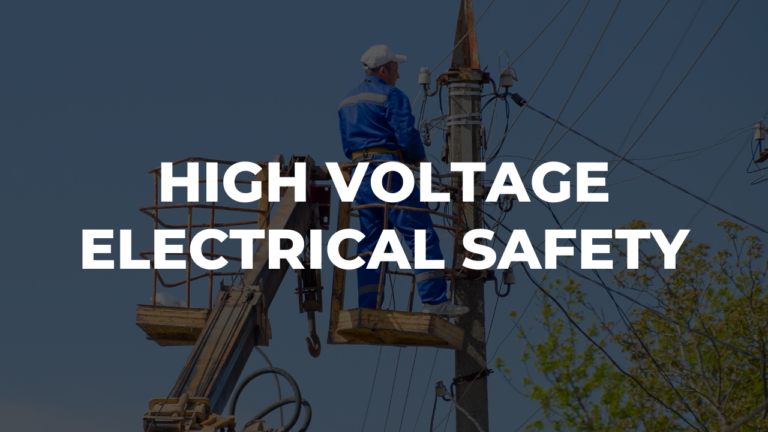During 2020, electrical accidents in the workplace resulted in 2,200 nonfatal electrical exposure workplace injuries in the United States. At least 87% of those accidents were from direct exposure events, proving that there are many improvements businesses can make to their incident prevention strategies.
Dealing with electrical accidents in the workplace involves a solid emergency response plan and a process for deep diving these incidents.
Free training course!
Use our high voltage electrical safety course to get your workers up to speed on preventing electrical accidents in work environments.
Crafting an emergency response plan
Under OSHA standard 1910.38: Exit Routes and Emergency Planning, emergency action plans must contain procedures for the following actions:
- Reporting fires and other types of emergencies
- Evacuating during an emergency (including exit routes)
- Keeping critical operations running before evacuating
- Accounting for all workers after an evacuation
- Rescuing individuals or performing medical duties
- Contacting stakeholders about the emergency plan
Some electrical incidents are part of a larger emergency, such as an explosion or natural disaster. In that case, the best course of action is to follow the procedures outlined in your response plan to minimize workplace electrical accidents.
For other types of accidents, there are two main areas you want to focus on: treating injuries and addressing the root cause.
Treating electricity injuries
The severity of electrical injuries varies depending on the voltage level a worker encounters. It also varies according to the electrical shock’s travel pattern. Some currents take a less direct route through the body, decreasing the amount of damage to internal organs.
On the scene of an accident, it’s critical to turn off the electrical current as quickly as possible. Of course, you don’t want to expose yourself or others to additional injuries just so you can stop the flow of electricity. But, if you can safely stop the current, do so right away to prevent further electrical accidents where you work.
Your next priority should be treating any electrical accidents in the workplace. These are some of the most common side effects and injuries related to electrical accidents:
- Burns
- Irregular heartbeat
- Unconsciousness
- Fall-related injuries (dislocations, head trauma, etc.)
- Death
Since exposure to electricity may cause a worker’s heart to stop, it’s important to prioritize CPR training at your facility. All EHS staff and operations managers should have first aid training and be able to perform CPR following an electrical accident.
Another major factor is triage for severe burns. Here are the best practices for each level of burn:
- First degree: Clean the burn with cold water, apply a topical ointment, and cover it.
- Second degree: Clean the burn with cold water, cover it, and visit doctor for further treatment.
- Third degree: Call 911, lay the injured person down, and elevate the burn above heart level.
Teaching your site leaders the proper response to these injuries can save a worker’s life—especially in the case of severe accidents in the workplace.
Deep diving electrical accidents
When electrical accidents happen in the workplace, it’s easy to assume you’ve identified the root cause right away. After all, it’s not too difficult to pinpoint the outlet, panel, etc. involved in the incident.
But the equipment is almost never the root cause.
Often, incidents happen due to a failure of the protocols, training, and other safety-related systems for a particular worksite or process. When looking at this type of incident you want to look at both the mechanical and non-mechanical variables involved.
Ask yourself the following questions:
- At what step in the process did this accident occur?
- Were there any unexpected steps, equipment, or people involved in this accident?
- Did the worker(s) deviate from the standard approach?
- Were any essential people or equipment missing from the process?
- Did the accident happen onsite or offsite?
You may be able to identify the root cause by looking at what was missing or added to the equation. When the set of variables involved in a process changes, it can lead to confusion or missed steps. Those pitfalls can create hazards in otherwise safe processes, leading to workplace electrical accidents.
Going past electrical component issues to find how those issue came to be will get you the proper root cause to target. And once you know the underlying cause, you can take corrective action to ensure it doesn’t happen again.




